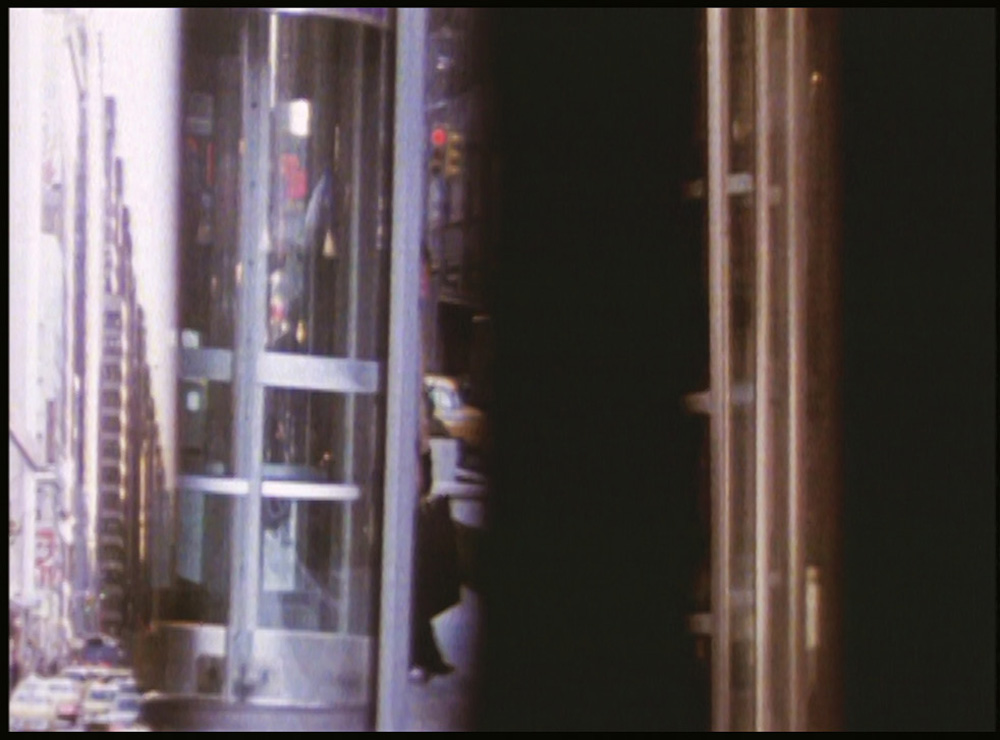 |
| Gordon Matta-Clark, Subway Graffiti |
The press release for the Gordon Matta-Clark exhibition at
Marian Goodman’s Marais gallery places architecture at the centre of the
installations, photos, films and drawings. This conception of his work draws on
his education as an architect. However, it’s not the first thought or
connection that came to mind as I wandered through this lovely exhibition. I
would rather describe them as being about the creativity and energy of
destruction, decay, and demolition. Architecture is too rational a
categorization for the multi-form, shifting experimental work of Matta-Clark.
 |
| Gordon Matta-Clark, Conical Intersect, 1975 |
Seeing the work as it is presented here—clustered around two New York films (Day’s End, 1975 & City Slivers, 1976) and two Paris films (Conical Intersect, 1975, and Sous-Sols de Paris, 1977)— it might better be described as being about transition. In all the work, not just the films, but photographs, drawings, and collages, he is preoccupied with movement and the energy of the ephemeral, the ineffability of process and that which is otherwise not seen. A series of drawings downstairs each have arrows in the middle of the page, as if the general thrust is to keep moving towards the next one, until eventually, we are in another space. In the films we see the emergence of the light, water and life through holes gouged out of walls, floors, structures that are already in a state of demolition and decay. Matta-Clark makes demolition to be a beautiful thing. In Day’s End, 1975 for example, he intervenes in the remnants of 19th century industrial architecture built on a pier over the Hudson River along Manhattan’s West Side. This project involved both cutting the corrugated metal exterior and carving the ground until eventually sunlight penetrate and flow through the barriers.
 |
| Gordon Matta-Clark, City Slivers, 1976 |
The works also focus on historical transitions. In a film that witnesses today seems quite devastating but at the time was acceptable enough to be carried through, Matta-Clark’s team hollows out a hole in a wall of the 17th century buildings being demolished to make way for the Centre Pompidou. Through the hole, the construction of the Pompidou is the focus of Conical Intersect, 1975. And once again, this simultaneous destruction and construction comes together with film, sun and light to create a somewhat romantic vision of a modern demolition. This is what would be considered the form of architectural fascination, but to me, it’s more a construction of something hopeful in the wall of a building whose destruction seems like a tragedy today.
 |
| Gordon Matta-Clark, Day's End, 1975 |
 |
| Gordon Matta-Clark, Conical Intersect, 1975 |
The films are magnificent, and there’s no doubt, Matta-Clark is using film at a time when film is at its most exciting. In the 1970s American film is interacting with the world and the New York City and the camera come together to discover things that neither would know on their own. In particular, here in Matta-Clark’s work we find movement, energy and ephemerality at a time when New York City is also changing and being challenged by the end of industrialization and economic disaster. Along these same lines, though made in a different medium, Marian Goodman also displays some of the subway photographs. Matta-Clark photographs the subway car in black and white and then hand colors his own graffiti, making a historical trajectory between now and then, across the length of a subway car in a series of images that are mounted as a frieze on the wall. And towards the tail end of the subway car, as it moves downtown along the rails, the image becomes blurred, just as it would if it were moving along rails, or in a film. Again, we see movement and energy and a world that never sits still.
Matta Clark’s is compelling work at an historical moment when everything is in flux and we struggle to come to terms with the post-industrial malaise of a post-capitalist world.
No comments:
Post a Comment